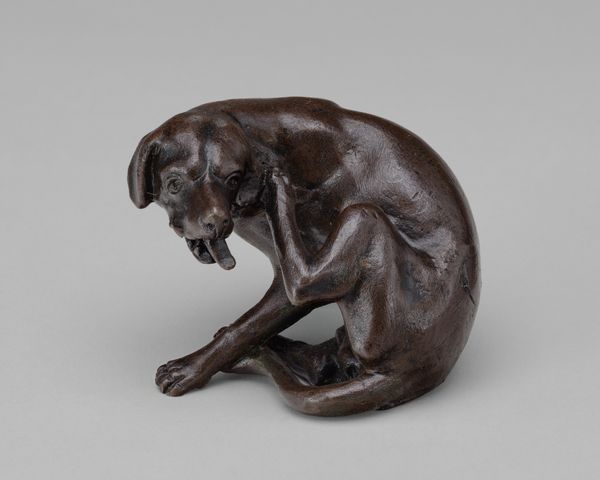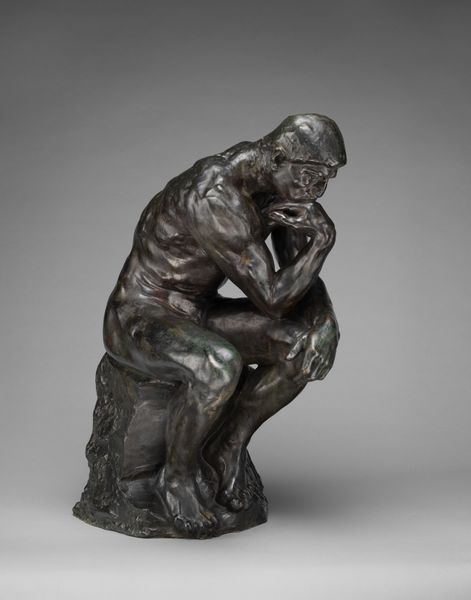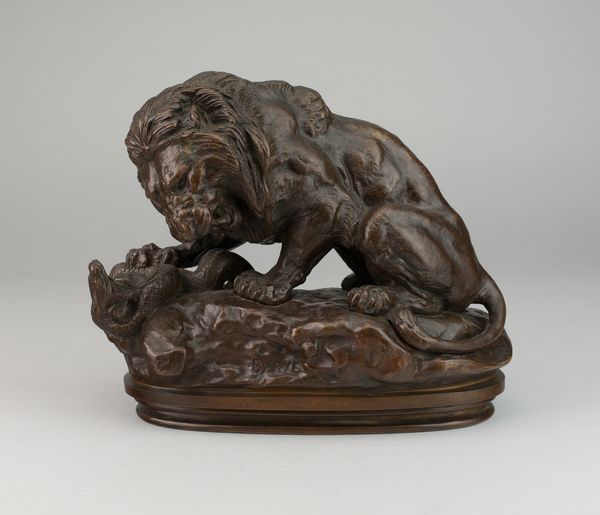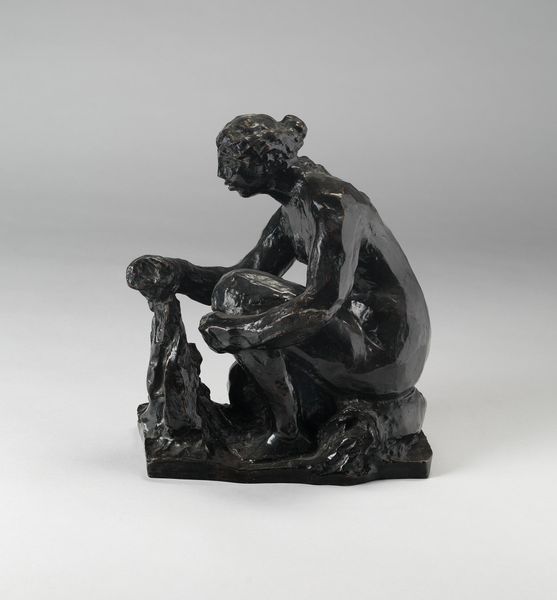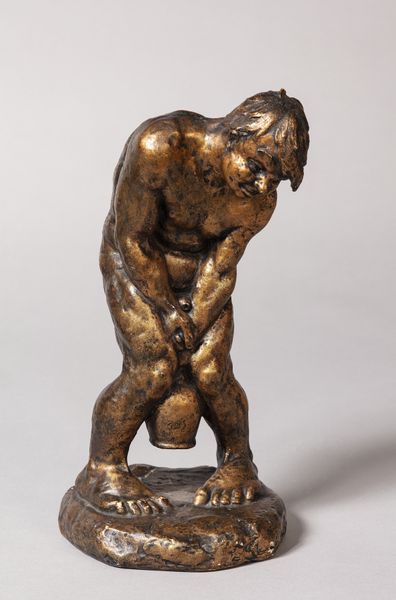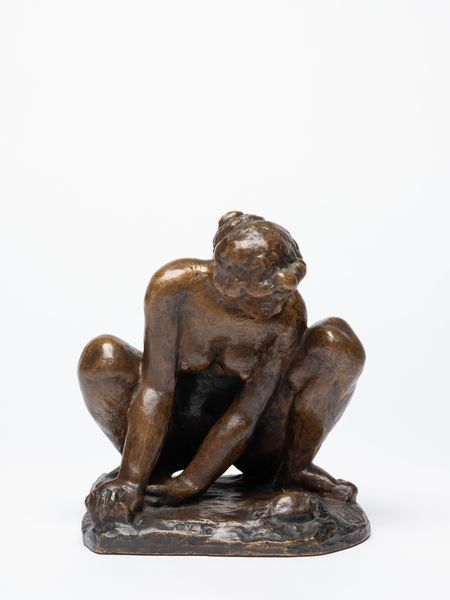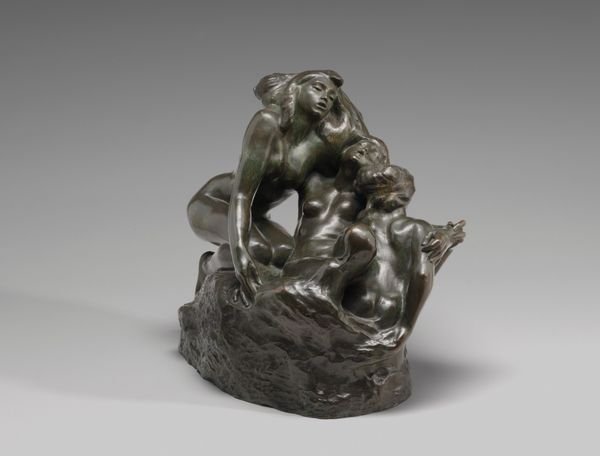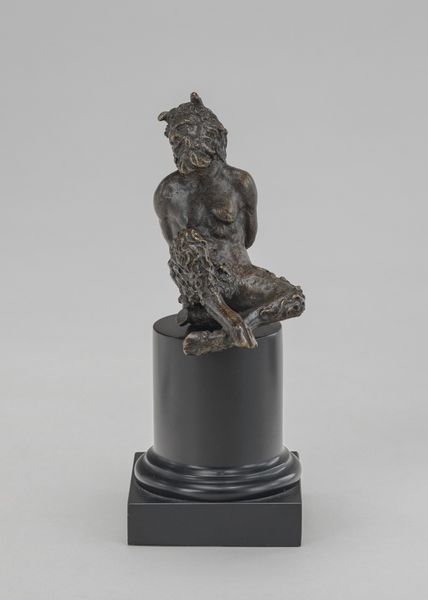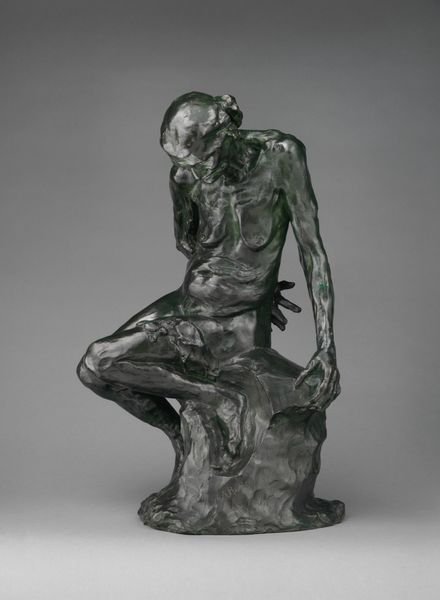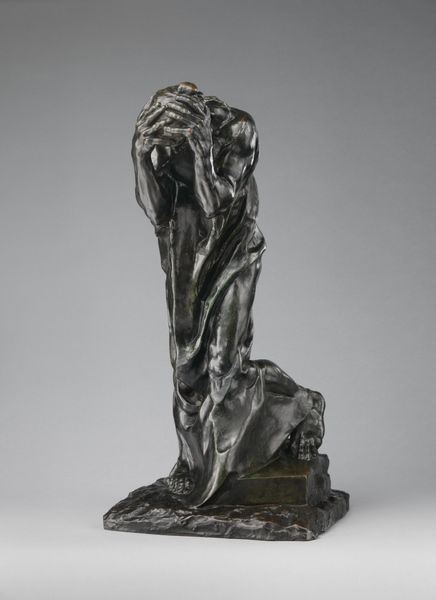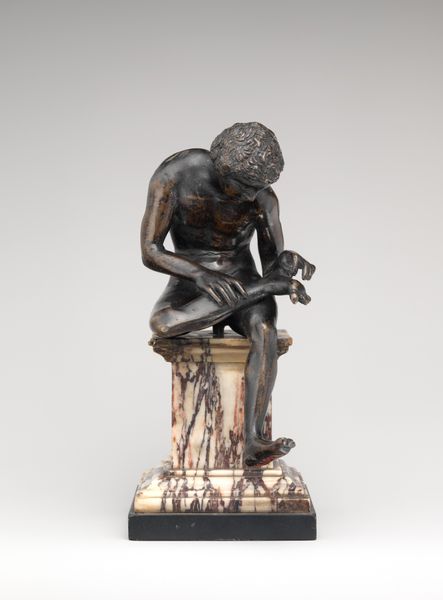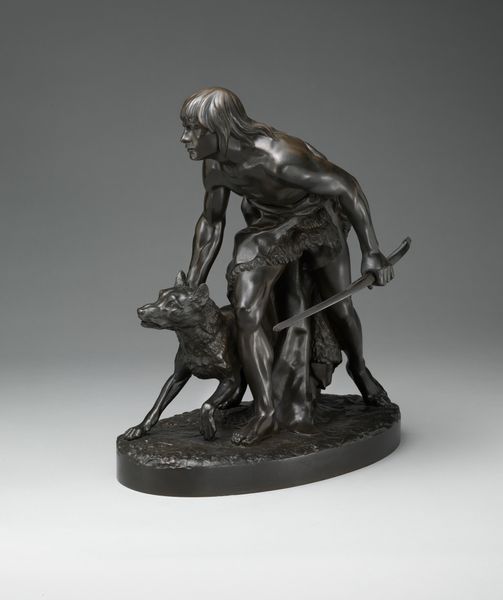
bronze, sculpture
#
sculpture
#
bronze
#
figuration
#
sculpture
#
academic-art
#
nude
Dimensions: overall: 22.86 × 20.32 × 16.51 cm (9 × 8 × 6 1/2 in.) gross weight: 6.35 kg (14 lb.)
Copyright: National Gallery of Art: CC0 1.0
Editor: Here we have Paul Wayland Bartlett's "Adam," cast in bronze in 1896. It depicts a crouching nude male figure. The way he's hunched over, head almost hidden, makes me feel a profound sense of anguish. What does it evoke for you? Curator: Anguish is definitely the word, isn’t it? It’s that sense of inward collapse, a silent scream rendered in bronze. For me, it whispers of the burden of consciousness, a timeless contemplation of the human condition, even more pointed when the human is *the* Adam. Consider the historical backdrop, too. Late 19th century. Science challenging faith. Progress battling tradition. Is this Adam representing a sort of disillusionment? The gleaming bronze hides that darkness well, don’t you think? Does the figure invite your curiosity? Editor: Absolutely. Is the "gleaming bronze" possibly an example of academic style from that time period, a subtle kind of idealization even in despair? Curator: Precisely! It’s that push and pull, the beautiful form grappling with raw emotion. Do you see how the tension is palpable in the musculature, the way the light catches those flexing forms? Editor: Yes, there’s this amazing contrast between the classical sculpting of the body and the raw emotion it conveys. Thanks, I’m noticing even more of this tension now. Curator: Isn’t it interesting how a static object can hold so much narrative and feeling? Art—a mirror, reflecting not just what we see, but how we feel.
Comments
No comments
Be the first to comment and join the conversation on the ultimate creative platform.
